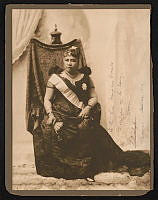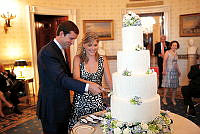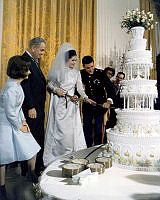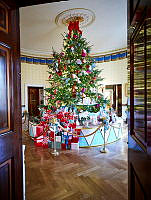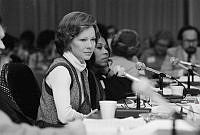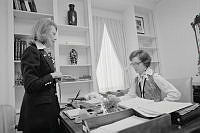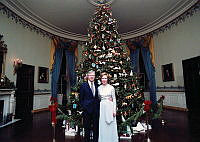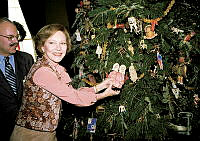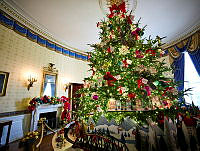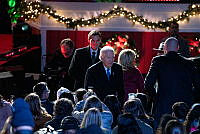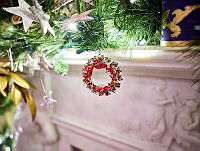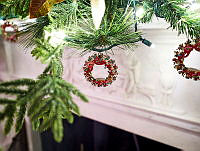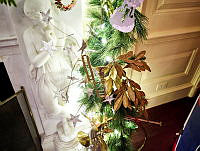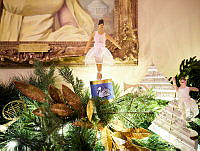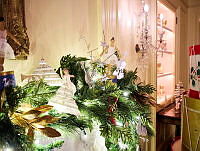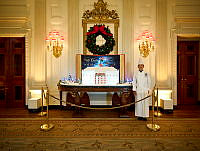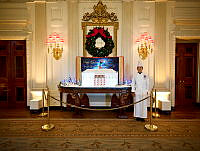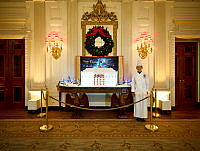White House Decorative Arts in the 1950s
Copyright © White House Historical Association. All rights reserved under international copyright conventions. No part of this article may be reproduced or utilized in any form or by any means, electronic or mechanical, including photocopying, recording, or by any information storage and retrieval system, without permission in writing from the publisher. Requests for reprint permissions should be addressed to books@whha.org
In the fall of 1950, more than a year before the Truman family returned, the Commission on the Renovation of the Executive Mansion discussed furnishing the house in either late 18th century Georgian style or early 19th century Federal style to celebrate the house’s early history. However, rising construction costs limited the budget for new furniture and many pieces removed before the construction were reinstalled with the addition of some neo-classical reproductions. The most dramatic change in décor was in the State Dining Room where the oak-paneled walls were painted soft green. A new state service designed for the Trumans had a green border to correspond with the newly painted walls. The Trumans saw and approved all sample sketches for the state rooms and were especially involved in the interior decorating of the second and third floors. President Truman’s 1952 televised tour of the house showed his immense pride in the results.
President and Mrs. Eisenhower moved into the newly renovated White House in 1953 and were impressed by its simple dignity. Since everything had just been renovated, Congress did not provide the $50,000 given to each new administration in that period for furnishings and redecorating. Mamie Eisenhower took a great interest in the china collection and arranged for a Smithsonian Institution curator to research, identify, and rearrange the china in the China Room. She also accepted many gifts, among them a collection of gilded silver received in 1956 from Mrs. Margaret Thompson Biddle. In 1958 the Vermeil Room was created to display the pieces.

Wine Cooler. Paul Storr, London, 1809-10, for Rundell, Bridge & Rundell. Four urn-shaped wine coolers came as part of the vermeil collection that was donated to the Eisenhower White House in 1956 by Mrs. Margaret Thompson Biddle.













